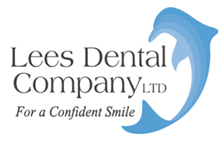Crowns
Crowns are protective jackets used to strengthen and restore a broken tooth or to change the colour, shape or position of an existing tooth. Crowns have a good life expectancy, often 15 years or more, but need to be maintained. Life expectancy will be lower if oral hygiene is not maintained around the crowns or a high sugar or acid diet is maintained.
Problems that can occur with crowns:
A dark line appearing around the gum margin of the crown. All gum tissue gradually shrinks with age and the edge of a crown that was not apparent at the time of fitting the crown can appear with time. This is more likely in smokers or people who do not maintain the health of the gums around the crown margin. This can be sometimes repaired.
A proportion of crowned teeth may die – i.e the 'pulp' or nerve tissue may die, necessitating further treatment (Root canal therapy).
The shade of tooth-coloured crowns does not change, although it is likely that natural teeth adjacent to the crown will darken with age.
Crowns can become de-cemented, although this is not common and is often the result of trauma or excessively sticky food substances. Usually a de-cemented crown can be bonded back into place.
Temporary crowns:
Temporary crowns are placed to protect the underlying tooth between its preparation and the fitting of the permanent crown. Temporary crowns are made of acrylic and are cemented in with a weak cement. It is important to be careful eating with a temporary crown and to be careful cleaning, brushing gently and avoiding flossing in this area. The tooth maybe slightly more sensitive to hot and cold until the permanent crown is fitted. If a temporary crown becomes de-cemented you should contact the Practice.
Post crowns:
These are crowns that are placed on root-filled i.e dead teeth, when there is very little of the tooth substance left. These crowns have a reduced life expectancy due to the compromised nature of the supporting tooth and are more likely to become de-cemented due to the smaller surface area and less favourable forces on the underlying tooth.
E4D crowns:
Crowns are usually made of ceramic and are more often made in one visit using the computer-designed E4D CadCam system.
Newly fitted crowns may feel temporarily more sensitive to hot and cold. The shape is often different from the original tooth and temporary crown and may take time to get used to. If eating after the new crown is fitted feels ‘out of harmony’ with the rest of the teeth or in the way it is important to contact the Practice. Click here to find out more.
Special situations:
Patients who clench or grind their teeth may need to wear a hard or soft guard over the teeth to protect against damage to the crown or tooth that bites against it. It is advisable for people who engage in contact sports or are likely to have an impact to the face to wear a sport mouth guard to protect the crowns and the rest of the dentition.
124 St Aubyn Street
New Plymouth
Phone. 06 759 1630

